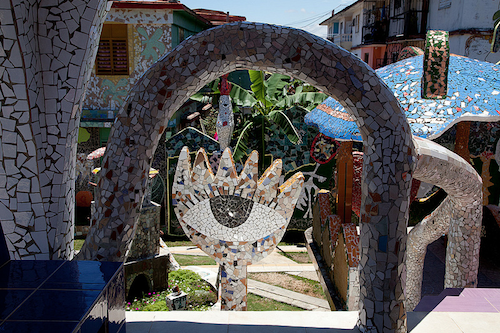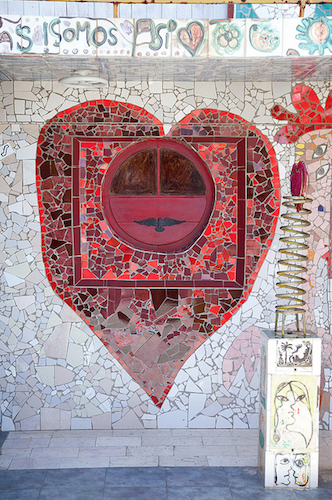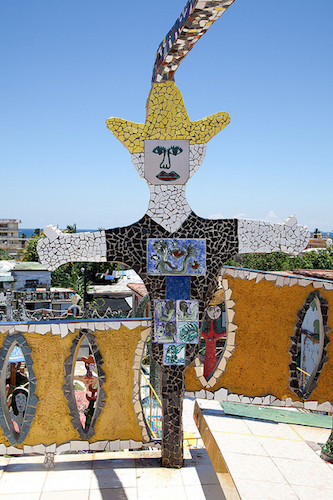
(Image credit: David Schroeder)
Last night I was online looking for photos of Cuba’s baseball league, and I stumbled across the work of Cuban pop-artist José Fuster. Specifically, I stumbled across Fusterlandia, a ceramic wonderland that’s grown to include Fuster’s home, studio, and neighborhood. This world is a cartoon that’s come to life. In addition to ceramics, Fuster also works with canvas, graphite, and engraving, and his studio work is often shown in France and Britain. And since we don’t hear a lot about individual Cubans down here in Texas, save their aging leader, I thought I might take a moment in this week’s blog post to highlight the work of José Fuster. Fusterlandia is visually stunning, to say the least.

(Image credit: David Schroeder)
Fusterlandia started roughly 10 years ago in Jaimanitas, a small fishing village outside Havana. Since then, Fuster has covered the homes of over 80 neighbors with ceramics and paint, decorating each house according to the character of its owner. The site is amazing to look at. The sky’s blue is mimicked on the tops of buildings, and surprising yellows and greens often make odd arcs in the air. Vibrant hearts pop up on the side of buildings, their red patriotically beating the same red that’s on Cuba’s flag. Ceramic hands and the shapes of vegetables are perched on top of buildings, reminding me of all the hideous marquees that I see when stopping for coffee at American highway-side gas stations. Except here in Fusterlandia the shapes are not hideous because they satirize the rather careless way that all cultures have decided to obfuscate our horizons.


(Image credits: David Schroeder)
What attracts me most to Fusterlandia is the way in which José Fuster has created a new world, and instead of simply projecting this world onto another medium (the way that one might do with canvas or film or any other form), he’s laid it on top of the world he inhabits. And so this isn’t some bustling corner of Havana, but rather the honest streets of a dusty and humble fishing village. The way in which Fuster works within these constraints reminds me of David Lynch or Picasso. Fuster’s not working in one of the most affluent parts of the world, and yet he refuses to be hemmed in by the circumstances. He’s creating something completely original that resonates with modern post-industrial life. There are bounds within which he must work, and he optimistically does so. This is not an art about breaking rules. It’s an art about optimistically playing with restraint. Check him out.
Recent comments
2 years 29 weeks ago
2 years 44 weeks ago
2 years 44 weeks ago
2 years 50 weeks ago
3 years 4 weeks ago
3 years 4 weeks ago
3 years 4 weeks ago
3 years 6 weeks ago
3 years 6 weeks ago
3 years 6 weeks ago